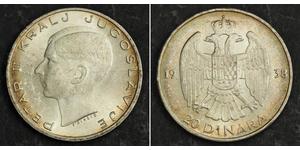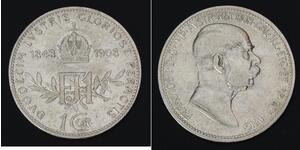Kingdom of Yugoslavia
The Kingdom of Yugoslavia, which existed from 1918 to 1941, was a multi-ethnic state in Southeast Europe that comprised several regions with diverse populations, including Serbs, Croats, Slovenes, Bosniaks, Macedonians, and others. Here are some historical persons and facts associated with the Kingdom of Yugoslavia:
King Alexander I: King Alexander I Karađorđević was the first king of the Kingdom of Yugoslavia. He played a crucial role in the unification of the South Slavic peoples into a single state after World War I. His reign was characterized by efforts to promote national unity and centralization, as well as tensions with political factions seeking greater autonomy.
Stjepan Radić: Stjepan Radić was a prominent Croatian politician and leader of the Croatian Peasant Party (HSS). He advocated for the rights of Croatia within the Kingdom of Yugoslavia and for the decentralization of power. His assassination in the Yugoslav Parliament in 1928 exacerbated ethnic tensions in the country.
Ante Pavelić: Ante Pavelić was a Croatian nationalist and leader of the Ustaše movement, which sought an independent Croatian state. Following the Axis invasion of Yugoslavia in 1941, Pavelić became the leader of the Independent State of Croatia (NDH), a puppet state established by Nazi Germany and Italy.
King Peter II: King Peter II Karađorđević succeeded his father, King Alexander I, following his assassination in 1934. However, Peter II was only 11 years old at the time, so a regency council ruled in his place until he came of age. His reign coincided with the tumultuous period leading up to World War II.
Yugoslav Partisans: The Yugoslav Partisans were a communist-led resistance movement that fought against Axis occupation forces and collaborated regimes during World War II. Led by Josip Broz Tito, the Partisans played a crucial role in the liberation of Yugoslavia and the establishment of a socialist federation after the war.
Axis Occupation: During World War II, Yugoslavia was occupied by Axis powers, including Germany, Italy, Hungary, and Bulgaria. The country was dismembered, with various regions coming under direct occupation or control of Axis puppet states.
Yugoslav Monarchy Abolished: In 1945, following the liberation of Yugoslavia from Axis occupation, a communist-led government was established under the leadership of Josip Broz Tito. The monarchy was abolished, and Yugoslavia became a socialist federation composed of six republics and two autonomous provinces.
Titoism: Josip Broz Tito, as the leader of Yugoslavia, pursued a policy of non-alignment during the Cold War, asserting Yugoslavia's independence from both the Eastern Bloc and the Western Bloc. Titoism emphasized self-management, decentralization, and a unique form of socialism that differed from Soviet-style communism.
Breakup of Yugoslavia: Despite Tito's efforts to maintain unity, ethnic tensions resurfaced in Yugoslavia in the late 20th century. The country ultimately dissolved in the early 1990s amid conflicts and wars, leading to the emergence of several independent states, including Serbia, Croatia, Bosnia and Herzegovina, Montenegro, Slovenia, and North Macedonia.
Legacy: The Kingdom of Yugoslavia left a complex legacy, characterized by its diverse population, ethnic tensions, and attempts at state-building. While it ultimately disintegrated, its memory continues to shape political and social dynamics in the successor states of the former Yugoslavia.
You may be interested in following coins
2025-05-27
- Historical Coin Prices
2025-05-23
- New coin is added to 1 Corona Austria-Hungary (1867-1918) Silver Franz Joseph I ( ...
1 Corona Austria-Hungary (1867-1918) Silver Franz Joseph I ( ...
group has 25 coins / 17 prices
⇑
AUSTRIA 1 Corona ND(1908) - Silver 0.835 - 60th Ann. of Reign - VF - 1338





-300-150-AeIKqUpY7NEAAAFhroEy54Nz.jpg)


